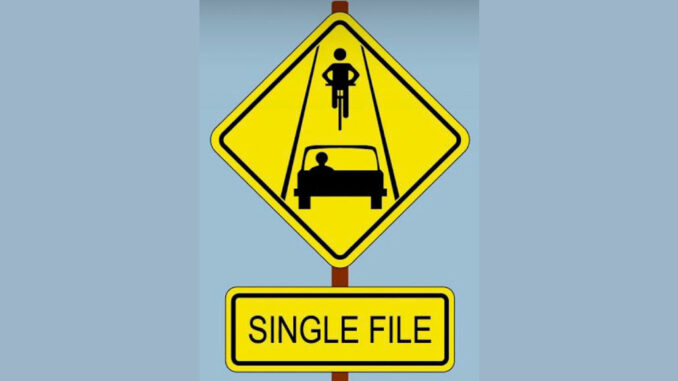
The cycling column is back and I will pick up where I left off last October – Leaside is indeed in a sweet spot for cycling thanks to progress on several cycling projects. The Yonge Complete Street pilot in midtown now extends to January 2023. We should see movement on the Eglinton Connects bikeway as the Crosstown LRT nears completion. And the Renewing Overlea project promises a wider bridge deck to add more space for active transportation. These developments are great for travelling to/from Leaside by bike, but what about within the neighbourhood? Are our roads conducive to safe cycling?
Based on the enquiries I receive, especially from parents who want their children to be safe biking in the neighbourhood, the answer is no. Our quiet residential roads are anything but quiet. Traffic calming and cut-through traffic have been an issue for the more than 30 years that I have lived in Leaside.
A few years ago, concerned parents successfully campaigned to have the speed limit on most of our local streets lowered to 30 km/h, significantly reducing the risk from a collision of serious injury or death to people walking and biking. Yet speeding remains an issue. At the January community meeting about the Leaside Transportation Management Plan, City staff explained how road design can help curb speeding and discourage shortcuts through the neighbourhood. One design option to consider is the Neighbourhood Bikeway.
According the Ontario Traffic Manual – Book 18 – Cycling Facilities, Neighbourhood Bikeways are “low volume, low-speed streets that have been optimized for bicycle travel.” These routes prioritize people travelling on bikes while discouraging through trips by cars. Through design, neighbourhood bikeways can reduce traffic volume while maintaining access for residents, and, as the road is shared with cyclists, reduce vehicle speeds to more closely align with the speed of someone cycling. Turn restrictions, one-way travel, and diverting through vehicle traffic are possible interventions for lowering traffic volume. To encourage speed compliance, measures can include speed humps as well as planters and bump-outs that narrow the roadway.
I spoke with Becky Katz, the manager of Cycling and Pedestrian Projects, Transportation Services, for the city, about how neighbourhood bikeways have been used in Toronto and to what effect. She noted there are several neighbourhood bikeways in the city and cited Shaw Street as an example. By implementing a contra-flow bike lane (bikes travel in both directions, motor vehicle movement is one way), limiting vehicle access and introducing traffic calming measures, Shaw has seen an increase in the number of people walking and biking while reducing cut-through traffic. But, as Katz points out, not all streets are suitable. Operating speeds should be 30 km/h or lower, and peak period volume no more than 75 motor vehicles. There can also be trade-offs with neighbourhood bikeways, such as limiting on-street parking and/or requiring people to alter daily travel patterns.
OTM Book 18 states, “In addition to being advantageous to cyclists, neighbourhood bikeways benefit pedestrians and local residents through reduced exposure to traffic, noise and emissions.” Considering all that neighbourhood bikeways can offer and the potential trade-offs, do you think they could work in Leaside? Let me know at .


